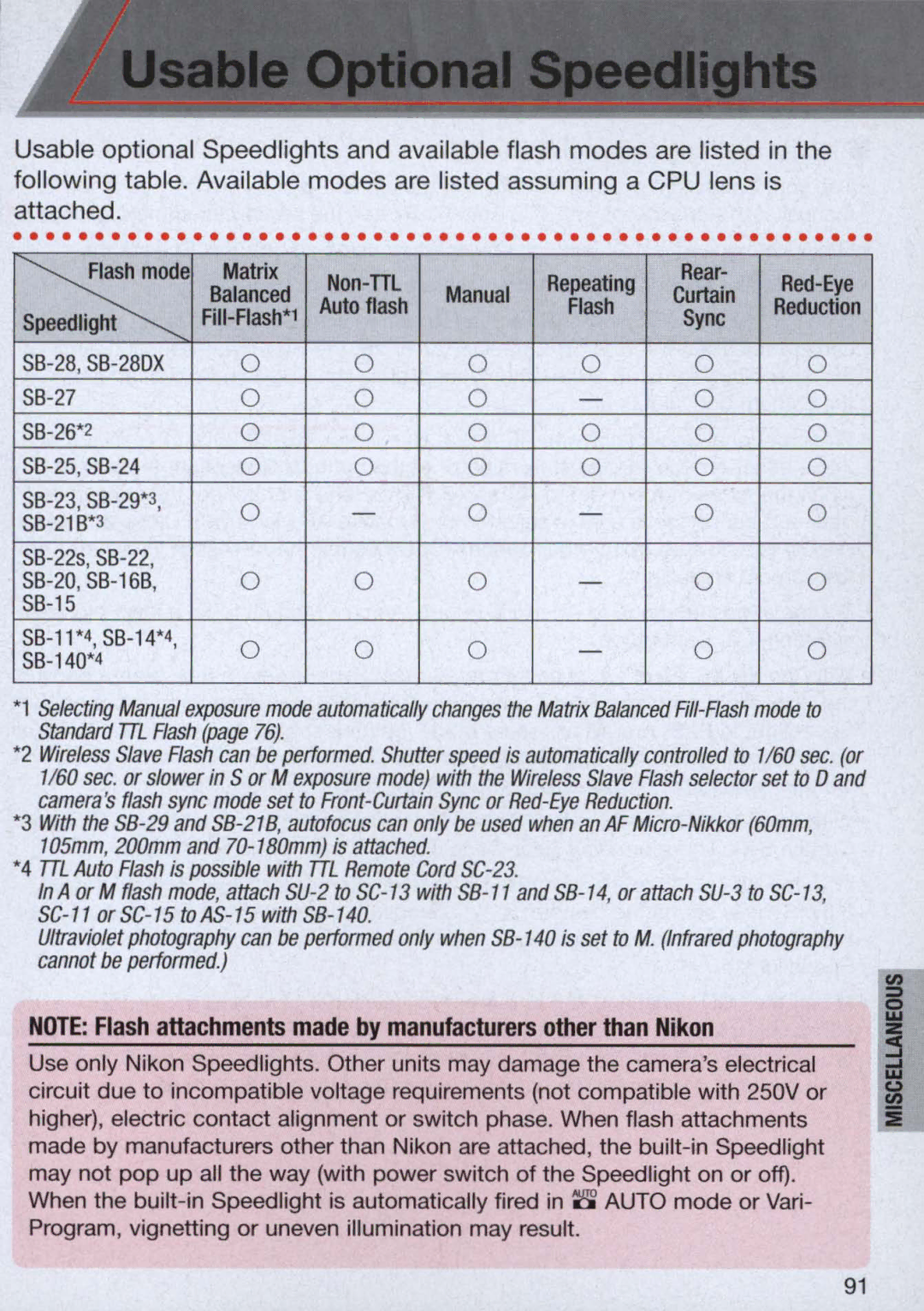
Usable optional Speedlights and available flash modes are listed in the
following table. Available modes are listed assuming a CPU lens is
.attached....................................................
~ Matrix
Balanced
Speedlight
0 | ||
0 | ||
0 | ||
0 | ||
0 | ||
| ||
0 | ||
|
Manual | Repeating | Rear- | |||
Curtain | |||||
Auto flash | Flash | Reduction | |||
| Sync | ||||
|
|
|
| ||
0 | 0 | 0 | 0 | 0 | |
0 | 0 | - | 0 | 0 | |
0 | 0 | 0 | 0 | 0 | |
0 | 0 | 0 | 0 | 0 | |
- | 0 | - | 0 | 0 | |
0 | 0 | - | 0 | 0 |
0 | 0 | 0 | - | 0 | 0 | ||
|
|
|
|
|
|
*1 Selecting Manual exposure mode automatically changes the Matrix 8alanced
*2 Wireless Slave Flash can be performed. Shutter speed is automatically controlled to 1/60 sec. (or 1/60 sec. or slower in S or M exposure mode) with the Wireless Slave Flash selector set to D and camera's flash sync mode set to
*3 With the
*4 TTL Auto Flash is possible with TTL Remote Cord
In A or M flash mode, attach
Ultraviolet photography can be performed only when
NOTE: Flash attachments made by manufacturers other than Nikon
Use only Nikon Speedlights. Other units may damage the camera'selectrical circuit due to incompatible voltage requirements (not compatible with 250V or higher), electric contact alignment or switch phase. When flash attachments made by manufacturers other than Nikon are attached, the
91
